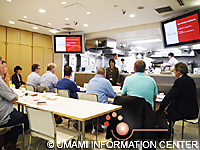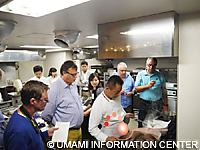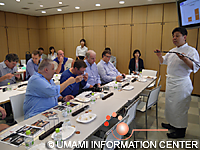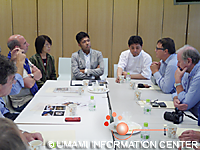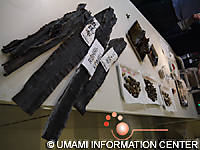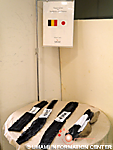Umami Lecture for The Mastercooks of Belgium
October 2013
Timetable and profiles of speakers (PDF)
Japanese Cuisine is gaining popularity for its well - balanced nutrition and healthiness throughout the world. Umami is one of the characteristics of Japanese cuisine. Top chefs in the world have shown their interest in umami, which enhances and utilizes the taste of ingredients. They also want to learn the techniques of Japanese cuisine to successfully bring out the taste of umami. Utilizing such opportunities, the Umami Information Center organizes events targeting those who are in various culinary related fields to provide accurate information on umami overseas and domestically.
The members of the Mastercooks of Belgium visited Tokyo, Kyoto and Shizuoka, and learned about Japanese ingredients and cooking techniques of Japanese cuisine. The Umami Information Center organized an umami lecture highlighting "dashi and umami" and "how to utilize umami" both in lectures and in cooking demonstrations, enabling the Belgian chefs to deepen their knowledge of umami from two aspects: cooking and science. In addition to the Q&A session, we set aside time for an interactive discussion to allow an exchange of views on the charm of umami and umami rich ingredients from the two nations, Belgium and Japan, and from two professions, chefs and scientists.
Dr. Kumiko Ninomiya gave the lecture that covered umami as one of the five basic tastes, umami tasting by cherry tomato, basic information of umami and umami rich foods, main ingredients for dashi, the physiological function of umami, the synergistic effect of umami and tasting of various dashi and bouillon. She did a lot of tasting and talked about umami from a scientific standpoint.
Following her lecture, Chef Takeshi Yamakawa, from Ajinomoto Communications Culinary Institute, showed how to make two basic Japanese dashi: kombudashi, and ichiban dashi. He also demonstrated the base for Japanese clear soup based on the ichiban dashi. Belgian chefs observed his methods and tasted various dashi.
Then Chef Koji Shimomura started his presentation. Knowing that the visitors' focus was on the Japanese vegetables, he chose asparagus and cauliflower to show how umami works. He brought in two sorts of asparagus, fresh and freeze-dried. The two samples allowed the Belgium chefs to understand different umami. The cauliflower was cooked in two ways: boiled in plain water and boiled in vegetable bouillon with white soy sauce. These tastings were sufficiently informative for chefs to understand how to utilize umami. He also talked about his philosophy of cooking and when and how he encountered umami. Furthermore, he explained that Chef Bernard Loiseau of La Cote d'Or where he used to work used salt to maintain taste satisfaction in a low fat content dish. He added that he uses umami instead of salt to keep the dish tasty even with less fat. His second tasting dish was velote (potage) of porcini mushroom. Another tasting was kobujime (marinated with kombu) of Iberico pork. The chefs enjoyed slightly broiled kobujime pork and learned how to make good use of umami in Western dishes. Chef Shimomura also brought six types of Japanese specialty vegetables: hasuimo, kaga renkon, tonburi, jyunsai (water shield), makibishi and shikaku mame (winged bean.) In the latter half of his presentation, all the chefs moved into the kitchen to see how to prepare squid ink risotto. Chef Shimoura was kind enough to show his specialty for this occasion, UMAMI FESTIVAL. The Belgian chefs took notes and pictures and asked a lot of questions throughout the presentation and chef Shimomura answered in fluent French.
While the audience was still basking in the afterglow of chef Shimomura's presentation, the chefs of Belgium and Japan and Dr. Ninomiya and Dr. Hiroya Kawasaki of Ajinomoto Co., Inc sat on the same table to exchange views from their professional standpoint. The Belgian chefs shared their impressions of the lecture and umami. Chef Shimomura expressed his view as a culinary professional and Dr. Kawasaki gave his comments as a scientist. The interactive conversation was very impressive for everyone. After that, the lecture for the Mastercooks of Belgium was brought to an end.
The Umami Information Center continues to organize such lectures in the hope of making umami more popular in European countries, especially in Belgium.
